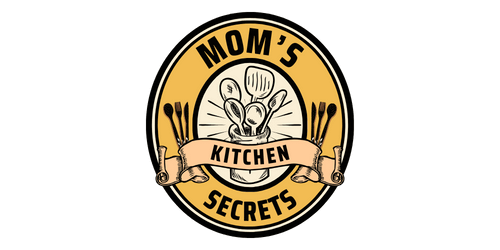Are you ready to take your cast iron cooking to the next level? In this article, we will explore the art of properly seasoning cast iron cookware. Seasoning is not just about adding flavor to your food, but also about enhancing the performance and longevity of your beloved pots and pans. Whether you are a seasoned cast iron enthusiast or a complete newbie, we’ve got you covered with all the tips and tricks to ensure that your cast iron cookware lasts a lifetime. So, roll up your sleeves and get ready to unlock the secrets of perfectly seasoned cast iron!
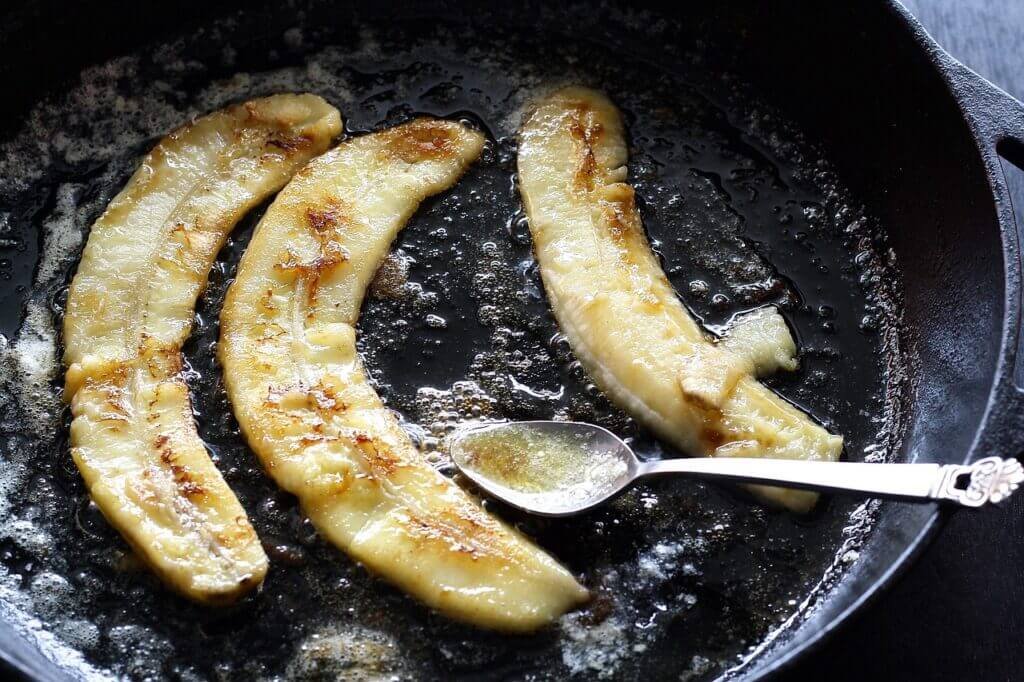
Why Seasoning is Important
Seasoning is a crucial step in maintaining and using cast iron cookware. It involves the process of building up a layer of oil on the surface of the cookware, which not only prevents rust and corrosion but also creates a non-stick surface. Without proper seasoning, your cast iron cookware can be more prone to rusting and food sticking to its surface, making it less effective in the kitchen. By taking the time to season your cookware correctly, you can extend its lifespan, improve its cooking performance, and ensure that it remains in excellent condition for years to come.
What is Seasoning?
Seasoning is the process of treating the surface of cast iron cookware with oil and heat, allowing the oil to polymerize and form a protective layer. This layer fills in the pores and imperfections on the surface of the cookware, creating a smooth, non-stick coating that helps prevent rust and makes it easier to cook various types of food. Seasoning also gives cast iron cookware its unique flavor-enhancing properties, as the oil becomes infused into the iron, providing a hint of pleasant, smoky flavor to your dishes.
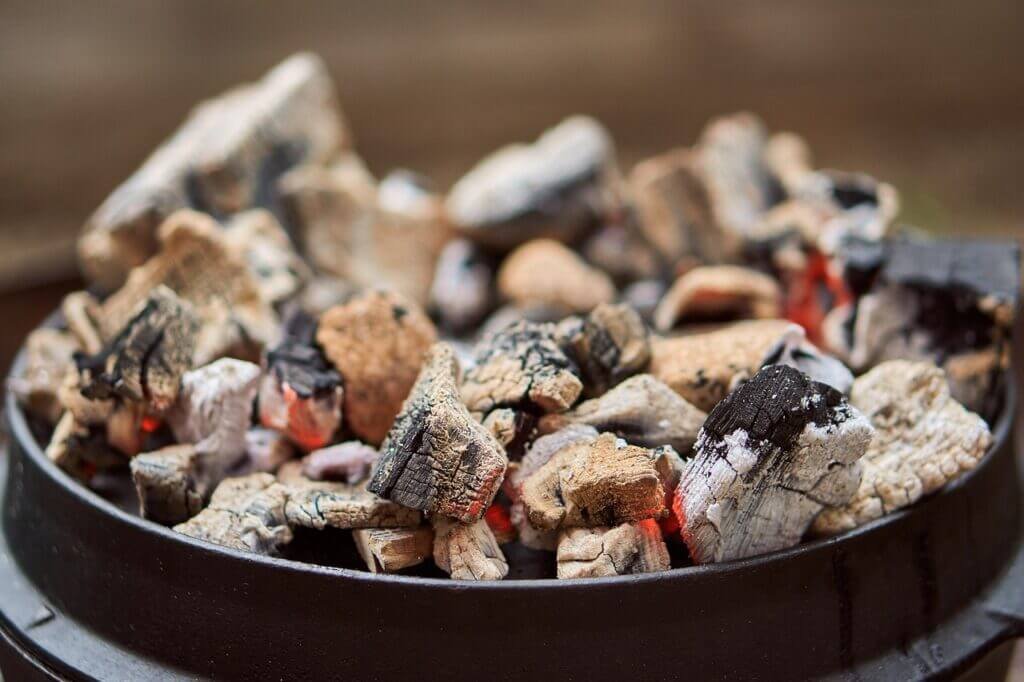
The Benefits of Seasoning
Properly seasoned cast iron cookware offers a range of benefits that make it a favorite among home cooks and professional chefs alike. Here are some key advantages of seasoning your cast iron:
1. Preventing Rust and Corrosion
Cast iron is susceptible to rust and corrosion, especially when exposed to moisture. Seasoning adds a protective layer that acts as a barrier between the cookware and oxygen, preventing the formation of rust. This is particularly important if you live in a humid environment or if you frequently wash your cast iron cookware.
2. Creating a Non-Stick Surface
One of the most significant advantages of properly seasoned cast iron cookware is the creation of a natural non-stick surface. When the cookware is seasoned correctly, the oil fills in the microscopic pores, forming a smooth coating. This non-stick surface allows you to cook delicate foods like eggs or fish without worrying about them sticking to the pan.
Preparing the Cookware
Before you begin the seasoning process, it is essential to prepare your cast iron cookware properly. This ensures that the oil bonds correctly to the surface for optimum seasoning results.
1. Cleaning the Cast Iron
Start by cleaning your cast iron cookware thoroughly. Use hot water and a brush to remove any food remnants or residue. Avoid using soap, as it can strip away the existing seasoning. If needed, you can use a small amount of mild dish soap, but make sure to rinse it off thoroughly to avoid any soapy residue.
2. Removing Rust or Old Seasoning
If your cast iron cookware has rust or old seasoning, it’s crucial to address these issues before seasoning. You can remove rust by scrubbing it off with steel wool or a stiff brush. For old seasoning, you can use oven cleaner or a lye-based product to strip away the old layers. Make sure to follow the product instructions and wear gloves to protect your skin.
3. Drying the Cookware Thoroughly
After cleaning and removing any rust or old seasoning, be sure to dry the cookware thoroughly to prevent any moisture from remaining. This can be done by towel-drying and allowing the cookware to air-dry completely. Any lingering moisture can lead to rust, which can affect the seasoning process.
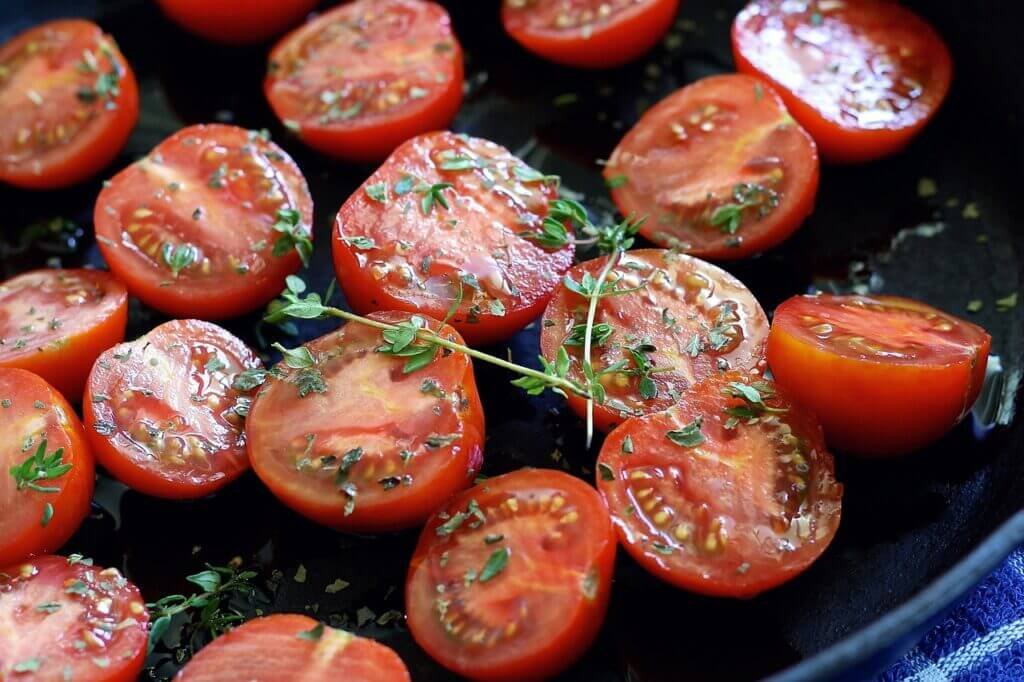
Choosing the Right Oil
The type of oil you choose for seasoning plays a vital role in the effectiveness and longevity of the seasoning process. Different oils have different smoke points and properties, so it’s essential to select the right one for your cast iron cookware.
1. Types of Oil for Seasoning
There are various options when it comes to selecting an oil for seasoning, but it’s crucial to choose oils with high smoke points and stable fats. Some commonly used oils for cast iron seasoning include vegetable oil, flaxseed oil, and animal fats like lard or bacon grease.
2. Popular Choices: Vegetable Oil, Flaxseed Oil, and Animal Fat
Vegetable oil, such as canola or soybean oil, is a popular choice for seasoning due to its high smoke point and readily available nature. Flaxseed oil is also commonly used as it forms a durable, hard surface when polymerized. Animal fats like lard or bacon grease can add a unique flavor to the cookware but may have a lower smoke point.
3. Smoke Point Considerations
The smoke point of the oil is an essential factor to consider. It is the temperature at which the oil starts to break down and smoke. Oils with high smoke points, such as grapeseed or avocado oil, are ideal for seasoning as they can withstand the heat required for the polymerization process. Avoid using oils with low smoke points like olive oil, as they may burn and leave a sticky residue on your cookware.
Applying the Seasoning
Once you have prepared your cast iron cookware and selected the oil, it’s time to apply the seasoning. Follow these step-by-step instructions to ensure a thorough and even coating on your cookware.
1. Step-by-Step Guide
To begin seasoning your cast iron cookware, start by preheating your oven to the recommended temperature (more on this later). While the oven is heating, gently warm the cookware on the stovetop to open up its pores and allow for better oil absorption.
2. Coating the Cookware Evenly
Once your cookware is warm, apply a thin layer of oil to the surface using a paper towel or cloth. Be sure to coat the entire pan, including the handle and sides. Ensure that the layer is thin and even to prevent excessive buildup. You want to create a thin, smooth coating, not a pool of oil on the surface.
3. Applying Multiple Layers
For the best results, it is recommended to apply multiple layers of seasoning. After applying the first layer of oil, place the cookware upside-down in the preheated oven for the designated time. Once the time is up, remove the cookware, allow it to cool slightly, and repeat the process of oil application and baking. This builds up layers of polymerized oil, resulting in a stronger and more durable seasoning.
4. Avoiding Excessive Oil Buildup
While applying multiple layers is beneficial, it’s essential to avoid excessive oil buildup. Thick and uneven oil layers can result in a sticky or flaky seasoning that may require re-seasoning. Use only a thin layer of oil for each application to achieve the desired results.
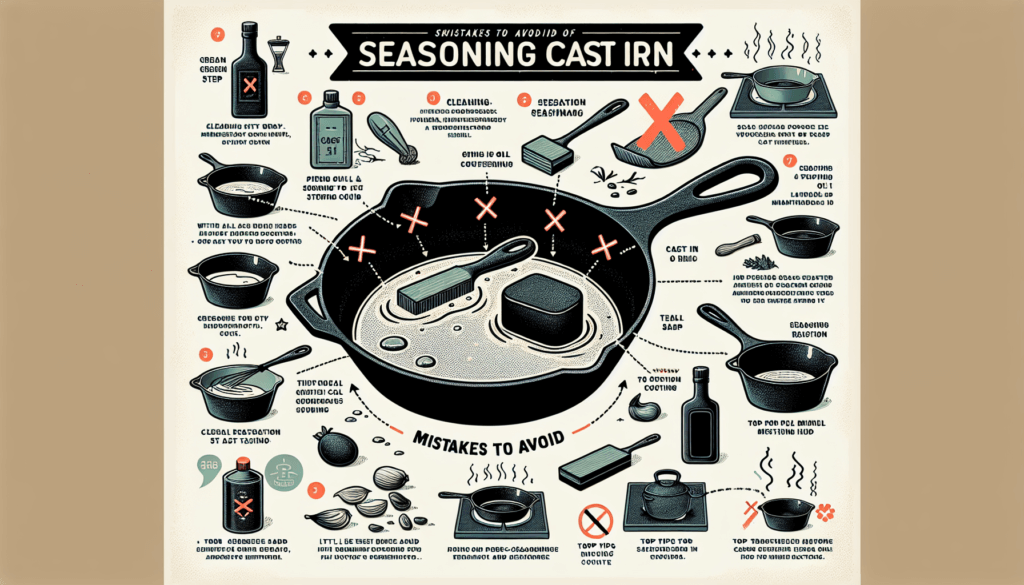
Baking the Cookware
Baking the seasoned cast iron cookware is a critical step in the seasoning process, as it ensures the oil polymerizes and forms a durable and hard surface. Follow these steps to properly bake your cookware for optimal results.
1. Preheating the Oven
Before placing your cookware in the oven, make sure to preheat it to the recommended temperature, usually between 375°F to 500°F (190°C to 260°C). This allows the oil to reach its smoke point, aiding the polymerization process.
2. Placing the Cookware in the Oven
Carefully place the seasoned cookware upside-down on the middle rack of the preheated oven. Placing it upside-down allows any excess oil to drip off, preventing pooling or uneven coating.
3. Temperature and Timing Recommendations
The temperature and timing recommendations for baking the cookware may vary depending on the type of oil used and personal preferences. Generally, baking the cookware for one to two hours is sufficient. However, some oils, such as flaxseed oil, require shorter but higher-temperature bake times. Refer to the specific oil’s instructions or reputable seasoning guides for accurate temperature and timing recommendations.
4. Ventilation Considerations
During the baking process, it is essential to ensure proper ventilation in your kitchen. The high heat and oil fumes can produce smoke, so open windows, turn on your kitchen’s ventilation system, or use a fan to circulate the air and prevent any unwanted odors or smoke buildup.
Maintaining Seasoned Cookware
To keep your cast iron cookware in excellent condition and prolong its seasoning, it is crucial to establish a proper maintenance routine. Following these steps will help you maintain the non-stick surface and prevent rust from forming on your beloved cookware.
1. Cleaning After Each Use
After each use, clean your cast iron cookware while it is still warm, but not hot. Use hot water and a soft brush to gently scrub away any food residue. Avoid using soap, as it can strip away the seasoning.
2. Using Hot Water and a Soft Brush
Hot water is sufficient for cleaning seasoned cast iron. If needed, a small amount of mild dish soap can be used, but make sure to rinse it off thoroughly. Use a soft brush or sponge to clean the cookware, ensuring that all remnants are removed.
3. Avoiding Soap and Harsh Scrubbers
To maintain the seasoning on your cast iron cookware, it is advisable to avoid soap and harsh scrubbers like steel wool or abrasive brushes. These can strip away the protective layer of seasoning, requiring you to re-season your cookware more frequently.
4. Drying and Oiling the Cookware
After cleaning, make sure to dry your cast iron cookware thoroughly. You can towel-dry it and then place it on a stovetop burner on low heat to ensure all moisture evaporates. Once dry, apply a light coat of oil to the cookware to replenish the seasoning and protect it from moisture. Store the cookware in a dry place to prevent the development of rust.

Restoring Seasoning
Over time, the seasoning on your cast iron cookware may deteriorate or become damaged. In such cases, it may be necessary to restore the seasoning by removing the old layers and reapplying a fresh coat. Follow these steps to restore the seasoning on your cookware effectively.
1. When to Consider Restoring Seasoning
You may need to consider restoring the seasoning if you notice significant flaking or peeling, the cookware becomes increasingly difficult to clean, or rust starts to develop. These signs indicate that the seasoning layer may no longer provide adequate protection or non-stick properties.
2. Removing Old Seasoning
To remove the old seasoning, use an oven cleaner or a lye-based product. Follow the product instructions carefully, as these products can be caustic and require protective gear like gloves and goggles. Scrub the cookware thoroughly to remove any remaining seasoning residue, then rinse it off and dry it before proceeding.
3. Reapplying the Seasoning
After removing the old seasoning, follow the steps outlined earlier for seasoning your cast iron cookware. Clean the cookware, choose the right oil, apply the seasoning in thin layers, and bake it in the oven. Multiple layers of seasoning are still beneficial to achieve a durable and non-stick surface.
Common Seasoning Mistakes
While seasoning cast iron cookware is relatively straightforward, there are a few common mistakes that you should avoid to ensure a successful seasoning process.
1. Using the Wrong Oil or Fat
Using oils or fats with low smoke points or unstable fats can result in sticky or flaky seasoning. Choose oils with high smoke points, such as vegetable oil or flaxseed oil, to achieve an effective and long-lasting seasoning.
2. Skipping the Cleaning Step
Properly cleaning and drying your cookware before seasoning is crucial. Skipping this step can lead to poor seasoning adhesion and potential issues down the line.
3. Applying Too Much Oil
Applying too much oil during the seasoning process can lead to excessive oil buildup, resulting in sticky or tacky seasoning. Always apply thin and even layers of oil to achieve the desired results.
4. Not Heating the Cookware Adequately
Insufficient heat during the baking process can prevent proper polymerization of the oil, resulting in an ineffective seasoning. Make sure to preheat the oven to the recommended temperature and follow the recommended bake time for the selected oil.
Alternative Seasoning Methods
While the oven method is the most common way to season cast iron cookware, there are a few alternative methods that you can explore for seasoning or re-seasoning your cookware.
1. Using the Stovetop
Instead of using the oven, you can use the stovetop to season your cast iron cookware. Apply a thin layer of oil over the entire surface of the cookware and heat it slowly over low to medium heat for about an hour. Be sure to monitor the process closely to avoid excessive heating or oil smoking.
2. Seasoning with Salt and Potato
An unconventional yet effective seasoning method involves using salt and potato. Rub the entire surface of the cookware with a cut potato and sprinkle it generously with salt. Use the potato as a scouring pad to scrub the salt into the cookware, then rinse it off and follow the usual seasoning steps for a finishing coat of oil.
3. Using the Grill or Campfire
If you have access to an outdoor grill or a campfire, you can also use these methods to season your cast iron cookware. Place the cookware directly on the grill grates or on a campfire grate, apply a thin layer of oil, and heat it until the oil has polymerized. Make sure to monitor the process closely to avoid excessive heat or oil fires.
Troubleshooting Seasoning Issues
Even with proper seasoning techniques, issues can arise. Here are some common seasoning issues you may encounter and how to address them.
1. Dealing with Sticky Residue
If your cookware has a sticky or tacky residue after seasoning, it may be due to too much oil being applied or insufficient baking time. To fix this issue, heat the cookware in the oven at a higher temperature for a longer duration to ensure thorough polymerization of the oil.
2. Addressing Uneven Coating
Uneven coating can occur when the cookware is not properly cleaned or seasoned. To address this issue, remove the old seasoning, clean the cookware thoroughly, and reapply the oil, ensuring even coverage. Applying multiple thin layers can also help achieve a more uniform coating.
3. Fixing Flaking or Peeling Seasoning
Flaking or peeling seasoning can be caused by the seasoning layers not properly adhering to the surface or excessive heat during baking. To fix this issue, remove the flaking or peeling seasoning, clean the cookware thoroughly, and reapply the oil. Make sure to follow the recommended temperature and baking time for the selected oil.
4. Removing Foul Odors
If your seasoned cookware has developed a foul odor, it may be due to residual food particles or inadequate cleaning. Thoroughly clean the cookware using hot water and a brush, and use a mild dish soap, if necessary. Additionally, you can boil water in the cookware with a tablespoon of baking soda to help eliminate any lingering odors.
In conclusion, proper seasoning is essential for maintaining and utilizing cast iron cookware effectively. By following the steps outlined in this article, you can ensure that your cast iron cookware remains rust-free, non-stick, and in excellent condition for years to come. So, don’t skip this crucial step and enjoy the benefits of seasoned cast iron in your kitchen!
